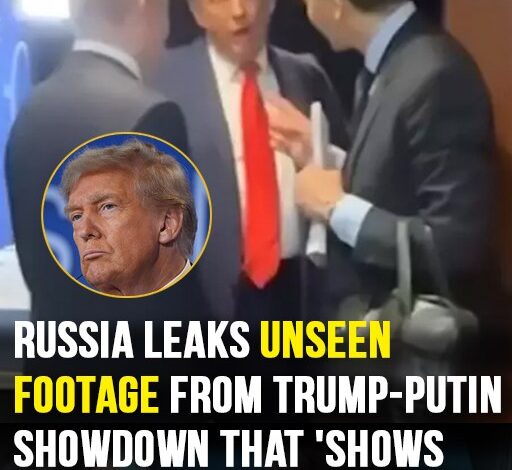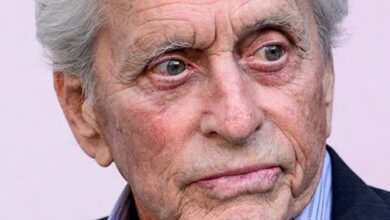
Russia leaks footage from Trump-Putin meeting that shows true power dynamic
The eyes of the world turned to Alaska last weekend, where Donald Trump and Vladimir Putin came face-to-face in a high-stakes summit that promised breakthroughs but instead left behind more questions than answers. For weeks, Trump had built anticipation, declaring that he would put forward a proposal “too good to refuse” while warning Russia of “very severe consequences” if compromise was not reached. His characteristic bravado filled headlines, setting the stage for a dramatic encounter. Yet when the doors closed and the hours passed, the much-hyped talks ended without a ceasefire, a sobering reminder that even the loudest promises can fall flat in the brutal reality of geopolitics.
Trump, never one to concede failure, still struck a defiant tone afterward. Standing before cameras, he insisted that “great progress” had been made, even if no document was signed. He spoke as though he had set the groundwork for peace, though critics were quick to point out that the battlefield in Ukraine told a different story. The war grinds on, and the gap between Moscow’s demands and Kyiv’s determination to resist remains as wide as ever.
Putin, for his part, remained as unyielding as he has always been. Reports from the negotiation room suggest that the Russian president laid out maximalist demands, including not only the recognition of territory already occupied by Russian forces but also claims to regions still firmly under Ukrainian control. To Ukraine’s President Volodymyr Zelenskyy, those demands were unacceptable, a direct threat to sovereignty and freedom. With unshakable resolve, he has publicly rejected any deal that carves up his country for the sake of expediency. The summit highlighted this impasse more clearly than ever: one side insists on dominance, the other refuses to yield.
Then came the footage that set the political world buzzing. Russian media outlets released a short video clip from inside the summit, a rare glimpse behind the curtain. In it, Trump is seen smiling broadly as he speaks to Putin, who listens with a slight smirk, appearing almost amused. A translator leans in, bridging their words. To some viewers, the clip looked like harmless diplomatic cordiality. To others, it was something far more symbolic—a carefully staged piece of propaganda designed to make Trump appear deferential and Putin triumphant.
Critics wasted no time pouncing on the imagery. In Washington, Congressman Eric Swalwell blasted the encounter as “manipulated theater,” arguing that Trump had humiliated himself on the global stage and handed Putin a symbolic victory. Across Europe, analysts warned that the optics of the meeting risked undermining transatlantic unity at a critical time. “What people see matters as much as what is said,” one diplomat commented, “and what they saw was Putin in control.”
Still, there were dissenting voices. Joe Hildebrand, writing for the Daily Telegraph, suggested that Putin may have miscalculated by flaunting his supposed dominance so openly. The imagery, Hildebrand argued, could backfire by pushing Trump into hardening his stance on Ukraine. Dalibor Rohac, writing in the New York Post, called for abandoning fruitless negotiations altogether in favor of a strategy of “maximum pressure” to punish and isolate Russia until its aggression ends.
Amid this swirl of controversy, there was at least one surprising glimmer of progress. Steve Witkoff, a U.S. envoy close to the talks, revealed that Putin had agreed in principle to allow NATO-style security guarantees for Ukraine—something resembling the collective defense principle enshrined in NATO’s Article 5. If true, it could represent a major breakthrough for Kyiv’s long-term defense. Yet the details remain vague, and skeptics note that Russia has often made promises in negotiations that unravel when put to the test.
Europe, meanwhile, is moving swiftly to reinforce its own stance. Leaders including France’s Emmanuel Macron, Germany’s Friedrich Merz, Britain’s Keir Starmer, and Zelenskyy himself are convening in Washington this week. Their message is firm and unified: there can be no peace if it requires Ukraine to cede territory. For them, sovereignty is not a bargaining chip. European consensus, hardened by months of bloodshed, remains clear—Russia cannot be rewarded for aggression.
As Trump prepares for another face-to-face meeting with Zelenskyy, the Alaska summit lingers like a shadow over his next moves. For Trump, the political stakes are high. His supporters hope he can cast himself as a peacemaker bold enough to break deadlocks where others have failed. His critics, however, see only weakness and theatrical posturing that risks emboldening adversaries.
In the end, the true legacy of the Alaska summit may not be in written agreements but in the perception it leaves behind. Putin walked away looking confident and unwavering. Trump walked away claiming progress but under fire for appearing too soft. For Ukraine, the struggle remains as urgent as ever. And for the rest of the world, the meeting was a sobering reminder that the path to peace is fragile, fraught with symbolism, and shaped as much by perception as by policy.
One thing is certain: the footage released from that room has already taken on a life of its own. It may be only seconds of video, but in geopolitics, even seconds can shift narratives. For Putin, it was a demonstration of power. For Trump, it was a reminder that the theater of diplomacy can be as unforgiving as the battlefield itself. And for the world, it underscored that the war in Ukraine is far from over, no matter how many summits are staged or smiles are exchanged.




